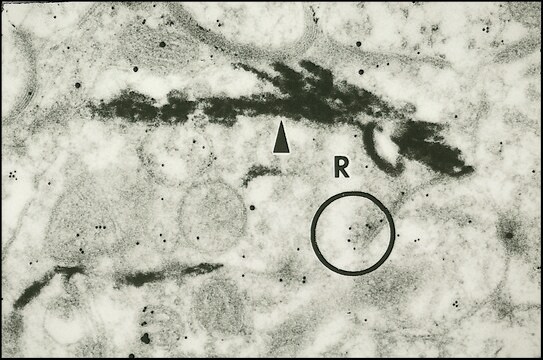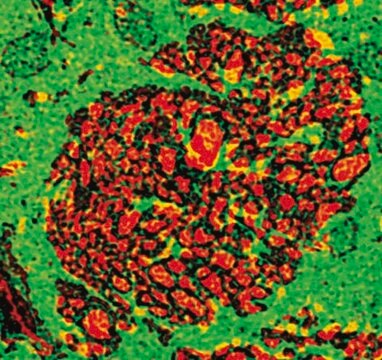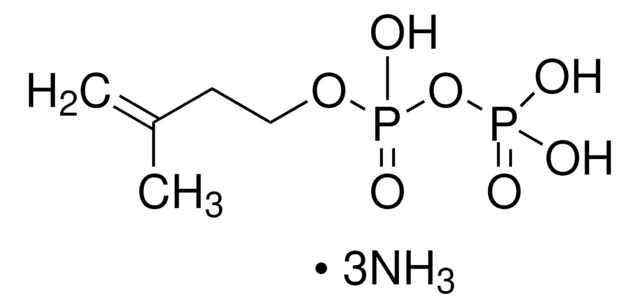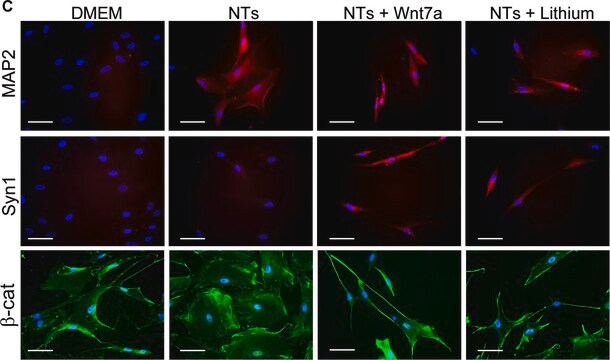G9282
Monoclonal Anti-Glutamate antibody produced in mouse
clone GLU-4, ascites fluid
About This Item
Polecane produkty
pochodzenie biologiczne
mouse
białko sprzężone
unconjugated
forma przeciwciała
ascites fluid
rodzaj przeciwciała
primary antibodies
klon
GLU-4, monoclonal
zawiera
15 mM sodium azide
reaktywność gatunkowa
wide range
metody
indirect ELISA: 1:10,000 using in situ prepared L-glutamate-glutaraldehyde-BSA conjugate for coating
izotyp
IgG1
Warunki transportu
dry ice
temp. przechowywania
−20°C
docelowa modyfikacja potranslacyjna
unmodified
informacje o genach
human ... GRM1(2911)
Powiązane kategorie
Specyficzność
Immunogen
Zastosowanie
Immuno-electron microscopy (1 paper)
- immunolabeling of glutamate in the lamina of the Drosophila visual system
- immunocytochemistry at a working dilution of 1:20,000 to detect glutamate using heart and extrinsic nerves of stomatopod crustacean, Squilla oratoria
- immunofluorescent staining as a primary antibody at a working dilution of 1:1000 using cryosections of brains and embryos from mice
- use as a primary antibody to measure the glutamate release in synaptosome preparations
Działania biochem./fizjol.
Oświadczenie o zrzeczeniu się odpowiedzialności
Nie możesz znaleźć właściwego produktu?
Wypróbuj nasz Narzędzie selektora produktów.
Kod klasy składowania
10 - Combustible liquids
Klasa zagrożenia wodnego (WGK)
WGK 3
Temperatura zapłonu (°F)
Not applicable
Temperatura zapłonu (°C)
Not applicable
Certyfikaty analizy (CoA)
Poszukaj Certyfikaty analizy (CoA), wpisując numer partii/serii produktów. Numery serii i partii można znaleźć na etykiecie produktu po słowach „seria” lub „partia”.
Masz już ten produkt?
Dokumenty związane z niedawno zakupionymi produktami zostały zamieszczone w Bibliotece dokumentów.
Nasz zespół naukowców ma doświadczenie we wszystkich obszarach badań, w tym w naukach przyrodniczych, materiałoznawstwie, syntezie chemicznej, chromatografii, analityce i wielu innych dziedzinach.
Skontaktuj się z zespołem ds. pomocy technicznej







